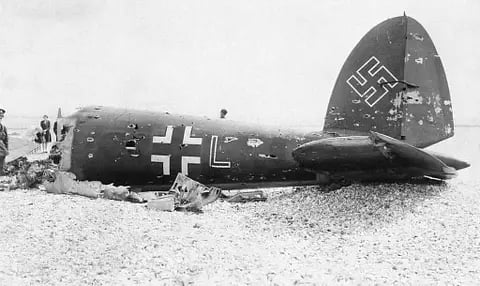"Battle of Britain 1940: RAF vs. Luftwaffe & the WWII Turning Point"
"How the RAF's resilience defeated the Luftwaffe in 1940. Explore the aerial battle that changed WWII's course. Read more."


Introduction
The Battle of Britain (July–October 1940) stands as one of World War II’s most iconic conflicts, where the Royal Air Force (RAF) thwarted Nazi Germany’s Luftwaffe in a relentless aerial struggle. This battle not only saved Britain from invasion but also marked the first major defeat of Hitler’s forces. In this blog, we unravel the strategies, heroes, and technological marvels that defined this historic showdown.
Why Was the Battle of Britain a Turning Point in WWII?
The battle was Hitler’s attempt to gain air superiority for Operation Sea Lion, his planned invasion of Britain. Winston Churchill famously declared, “Never was so much owed by so many to so few,” honoring the RAF pilots. A Nazi victory would have crippled Allied morale and reshaped Europe’s fate.
Key Players: RAF vs. Luftwaffe
The RAF’s “Few”
Fighter Command: Led by Air Chief Marshal Hugh Dowding.
Aircraft: Agile Supermarine Spitfires and rugged Hawker Hurricanes.
Radar Technology: Pioneered early warning systems (Chain Home radar).
The Luftwaffe’s Strategy
Target Shift: Mistakenly bombed cities (The Blitz) instead of airfields and radar stations.
Aircraft: Messerschmitt Bf 109 fighters and Heinkel He 111 bombers.
Phases of the Battle
Kanalkampf (July 10–August 12): Attacks on shipping convoys.
Eagle Attack (August 13–September 6): Bombing of RAF airfields.
The Blitz (September 7–October 31): Bombing of London and cities. Want to earn 1ok/month by sharing your knowledge use hostinger to buy domain and earn upto 10k
Why Did the RAF Prevail?
Radar Advantage: Detected incoming raids early.
Tactical Errors: Luftwaffe’s focus on cities gave the RAF time to recover.
Foreign Pilots: 20% of RAF pilots were from Poland, Czechoslovakia, and other nations.
The Human Cost
RAF Losses: 1,543 aircraft destroyed; 544 pilots killed.
Luftwaffe Losses: 1,887 aircraft; 2,500 aircrew killed or captured.
Civilian Casualties: 40,000+ Britons died in the Blitz.
Legacy of the Battle
Symbol of Resistance: Boosted Allied morale and proved Hitler’s forces could be beaten.
Technological Impact: Cemented radar’s role in modern warfare.
Cultural Memory: Commemorated annually on Battle of Britain Day (September 15).
FAQs About the Battle of Britain
Q1: How long did the Battle of Britain last?
A: Officially from July 10 to October 31, 1940.
Q2: What was the Luftwaffe’s biggest mistake?
A: Shifting focus from airfields to cities during the Blitz.
Q3: Did the British fight alone?
A: No—international pilots from 13 nations joined the RAF.
Conclusion
The Battle of Britain was a testament to courage, innovation, and resilience. By outmaneuvering the Luftwaffe, the RAF not only defended Britain but also ignited hope for eventual Allied victory. For history buffs and students alike, this battle remains a timeless lesson in strategy and heroism.
